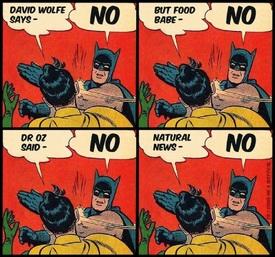Healthy eating on very small budget?

grumpopuppo
Posts: 90 Member
I would like to get down to 190lbs. I'm presently 219lbs. It seems to take roughly 5 months to lose 10lbs at the rate which I'm going. I believe this has a lot to do with my stress levels (thanks cortisol probably) and my poor diet, which amounts to 'cheap as you can find and non-perishable as it gets to fill the hole'. This is because, after my mandatory expenses, I have about $200CAD to last me 3/4 weeks. This covers All expenses, not just food.
Exercise is of course also a factor (or rather the lack of) but I worry that poor nutrition will make it very difficult.
Thus I'd like to ask after favourite poor-people recipes, grocery lists, budgeting strategies etc.
Thank you very much.
PS while I understand that I am not logging very accurately, I do keep track of my calories. I'd like to avoid 'addictive' calorie counting, as I've been down that road and it wasn't enjoyable. Tips and tricks to avoid this are also appreciated.
Exercise is of course also a factor (or rather the lack of) but I worry that poor nutrition will make it very difficult.
Thus I'd like to ask after favourite poor-people recipes, grocery lists, budgeting strategies etc.
Thank you very much.
PS while I understand that I am not logging very accurately, I do keep track of my calories. I'd like to avoid 'addictive' calorie counting, as I've been down that road and it wasn't enjoyable. Tips and tricks to avoid this are also appreciated.
1
Replies
-
Fortunately, accurate calorie counting is free if you have a food scale. I would focus on that as weight loss comes down to calories - eating nutrient dense foods are good for health though. Buy staples you can get in bulk. Choose cheaper options (frozen vegies over fresh, cheaper cuts if meat etc). Cook in bulk and freeze portions.11
-
I've found the best thing is to eat seasonal produce,because it will be the cheapest, some of which you can freeze yourself for even cheaper than prefrozen. Bulk bin beans, rice, and lentils are calorie dense and will give you good energy. I also like to buy whole chickens, they are usually soooooomuch cheaper per pound than the other packages available. I feed two people on about $25 a week in groceries. It's no fun and can be really stressful and upsetting, but I know you can do it

Things that help me most:
Plan! Look at the local ads and see what is in sale where, know what you're going to spend before you go and stick to it. I even decide what I'm going to cook for dinner every night and stick to it.
Find things you can use for repeat meals. This week I'm making chili and cornbread one night and Chile dogs another night, and will probably have chili spaghetti for lunch until I run out. A whole chicken costs $3-$5 usually, roast it with potatoes/carrots, other cheap hardy veggies and you can eat leftover for days off of a super inexpensive meal, you can tirn the carcass into chicken noodle soup for dirt cheap too.
I try to save a couple bucks (literally $2-3) a week and save it for when meat goes on a really good sale so I can buy a freeze enough to stretch for weeks on end. Hope that helps.
16 -
2
-
No Frills is great for bulk meat! I buy the family pack styles, and portion them out before freezing them. Eggs are also a solid and cheap form of protein and can last for up to 2 months in the fridge.
Dried beans and lentils are great too, they just take a little longer to prepare.
I've been on really tight budgets too, and I end up cooking a lot of soups, chili, and curry to stretch out the fresh ingredients I have. Canned veggies are also a good option for: tomatoes, mushrooms, spinach, and corn (that I've liked so far).
And yes, check the flyers for Save On, Superstore, and others near you before you buy your weekly/biweekly groceries!5 -
If you're unable to afford "better" foods, you can still control your portion sizes and monitor your calorie intake. Just try to be at or below the amount of calories MFP recommended for you, and you should lose weight.3
-
If you're unable to afford "better" foods, you can still control your portion sizes and monitor your calorie intake. Just try to be at or below the amount of calories MFP recommended for you, and you should lose weight.
this! if the only thing you do is eat less than you were before, you will lose (assuming you eat less enough to put you in a deficit)5 -
I picked up a family pack of pork chops at No Frills for $5. That pack will make the two of us many meals.
Two gadget essentials in your situation is a crock pot (or maybe one of those new insta pots) and a food weigh scale. I got my food scale (OXO) at Wal Mart for about $25.
As long as you have some staples in your cupboard, protein, frozen veggies, and frequently bought small quantities of fresh veggies and fruits, you can eat very well.
https://www.budgetbytes.com
Walking is free.
Beans and lentils are economical and often underrated.1 -
I'm in the UK so I use the Aldi super six vegetable offers. We eat what ever is on offer.
Provides variety at a great price.1 -
Meatless days! I hear cannes tuna can be cheap too and healthy depending on what kind you get.
Most of what I would have mentioned has already been mentioned. But I have to second the prep and freeze method! I live alone on a student budget and prepare a delicious bean soup/stew (depending on how much water I put into it) that lasts me a week for very little (I'd say roughly $5US but converting that from Swedish money) for the whole pot. Like many things the initial output might cost a bit more (a package of lentils, different kinds of dried beans, a good vegetable stock) but once you have it, it will last at least a month. I like to get several kinds of beans and use less of each, but that is a personal choice.
I would also say - seasoning! If you are able to get different spices that you like, you can spruce up any meal: even a weeks worth of chicken won't have to taste the same every day!1 -
I lost 60 pounds years ago on a very limited budget. The key is having a plan and shopping with a list that covers all of your meals until your next paycheck. I would cook two main courses in bulk over the weekend (beef stroganoff, chicken spaghetti, ckicken & rice, beans & rice, chicken & dumplings, etc.) and then divide into separate meal-size containers and freeze. I took those to work for lunch and heated them in the microwave. Breakfast was oatmeal and fruit, Dinner was usually quick, a bowl of cereal or a bagel and yogurt or and I would take an apple to work for my afternoon snack. Fresh vegetables are expensive, so I bought frozen mostly or canned and the crockpot was my best friend because they turn inexpensive cuts of meat into delicious soups and stews.2
-
When on a tight budget, I've found I can save the most money by limiting the variety of foods I eat (which doesn't bother me because if I like something I'm fine eating it every day). My favorite filling meal, which is also cheap is Greek or Icelandic Yogurt (buy the big tub, not the little containers) mixed with: Banana and Peanut Butter or Frozen berries and oatmeal.
As others have said, whole chickens are a good value. Also, if you can save up enough to buy a whole boneless pork loin, it's easy to cut into a roast or pork chops and it costs less that way.
Do you have any friends or neighbors with gardens? I'm sure they'll have some zucchini, squash and cucumbers to spare we can never eat all that we grow from just a few plants.2 -
Cheap food isn't inherently unhealthy - and healthy food isn't inherently expensive.
(though if you decide you MUST do it through paleo or something, I suppose it can be). In fact, any "Diet" that's sold you in a book or via a formal plan is likely to be more expensive, because their meal plans don't take leftovers and using up ingredients into account. Plus all the foods you're supposed to eat because every "diet" has some kind of "superfood" that you have to eat even if its out of season.
For most people, inexpensive carbs can be healthy. They've gotten a bad rap, overall. Brown rice, lentils, split peas, beans -- are all perfectly "healthy" unless you buy into the demonization of all grains. Which I don't. Potatoes aren't the antichrist either. Bake them whole, eat the skin, and they can be a reasonable, inexpensive part of a larger meal.
Whole grains, beans, legumes are all inexpensive and satisfying.
Eggs are cheap protein for a reasonable calorie count.
Inexpensive cuts of meat can be mixed with whole grains and lots of veggies to produce filling meals with decent amounts of protein.
To eat as well as you can on as little money as you can, planning is key. You need to sit down and make a list, shope for that list of meals, and then cook and eat those meals. I do it weekly, and I use my grocery store's online list-building service to see how much my meal plan will cost.
Veggies tend to be cheaper than fruits. Out of season fruits and highly perishable ones are especially expensive. We don't do a lot of fruit. Cabbage family veggies are nutritious and more filling than softer greens.
Frozen produce is your friend - its just as nutritious, easy to prepare, and often cheaper - plus it minimizes waste because it stays ready until you need it. Frozen brocolli, caulflower, and sweet potatoes are staples of my shopping list.
Meals in my regular rotation:
Tacos - I cook a pound of beans, and a pound of taco meat (Seprately). It's enough for my family of four (two teens) plus leftovers. Beans stretch the meat and add fiber. I add lettuce or baby spinach or wahtever greens I have on hand.
Fried rice: Leftover cooked rice, scraps of meat from previous meals, a bag of frozen peas and carrots, and eggs.
Cart chicken - Look it up on Serious Eats: Marinated chicken thighs cooked, chopped up, and then warmed up on a garlic-oregano sauce, service with rice, lettuce, and yogurt sauce.
African Chicken-Peanut stew - look it up on Eating Well: Chicken thighs, tomatoes, sweet potatoes, peanut butter, and spices. Served with rice.
Huevos rancheros: Leftover beans (see tacos above) spread on tortillas, topped with scrambled eggs, salsa, cheese, whatever.
LEntil soup: Lentils (I like red), an onion, some garlic, some carrots (a couple of fresh or a bag of frozen), water or broth. You can add brown rice while it cooks to make a complete protein. You can also throw some whole eggs (in the shell) into the pot to hard-boil while the soup cooks. Pull them out, run under cold water to chill, peel, chop, and add to your soup bowl.
2 -
Without indulging and only a little bit of paying attention (to the minutia of food costs) I can manage $30US/weekly for three meals plus small snacks over 5 days. I tend to indulge a little bit so average closer to $50US/week. If I'm religious about shopping in season, couponing (electronic & paper) and not indulging I could get this cost down to $25US/Week. I don't know what the rest of your expenses are within the $200CAD so it's hard to know what is left for food. However, the advice above is good. Healthy isn't necessarily expensive and if you really watch your intake and buy quality foods you'll be more satisfied and eat less.1
-
This is a good web site for cheap meal ideas: www.budgetbytes.com1
-
Beans (dry, outstanding with cornbread)
Rice (uncooked)
Potatoes (fresh)
Oatmeal
Chicken (quarters on sale)
Cottage cheese is relatively cheap way to add protein and is pretty good with shredded potatoes
Pasta
Hunts garlic and herb spaghetti sauce
Egg noodles (chicken and noodles)1 -
I spent about £100 per month on all groceries, and I could cut that easily by at least £20 if I cut snacking. I buy most food from Aldi and Lidl. Most my meals consist of something like rice, pasta, couscous, potatoe or sweet potato, a big pile of seasonal veggies, and a smaller amount of protein in good quality. I usually buy the wholegrain cheap bread from Lidl, and get an artisan bread every weekend. I guess the secret to a low budget is to be willing to experiement and to try out things, and to not buy convenice food but fresh ingredients. Well, in the UK anyway. I don't know the prices in the US. I hardly ever cook with more than 2 pots, and most dishes, including preparing take no more than 30 minutes, usually much less time.0
-
Do you have a slow cooker/crock pot? If so, you can use it to make a big pot of dried beans/soup/stew/etc. If you can find TVP (textured vegetable protein, sometimes called textured soy protein) in bulk, it may be a good way to add some cheap protein to your meals. It has very little flavor of its own, but will rehydrate and soak up the flavors of the dish you put it in. You can also use it as a meatless substitute for ground beef.0
-
& make price matching your friend.
Since it looks like you're Canadian... keep an eye on a website like this (before you head out shopping): https://www.flyertown.ca/#!/flyers/homedepotcanada-weekly?flyer_run_id=220022
use the search box in the upper left corner of that website to search for what you want to shop for, and just by typing in something I wind up buying each week "cucumbers"-- I can see that the price varies from $0.78 all the way up to $1.50
& I can either plan my shopping trip according to who is generally the cheapest, bring a flyer with me to price match in the store (if the store allows it!)... OR if you're an app fan, there are apps like Checkout51 or Flipp that sort of serve the same purpose.0 -
1. Eggs
2. 2. Bananas
3. Head of Lettuce
4. Whole Wheat Pasta
5. Sweet Potatoes(steamable)
6. Frozen Veggies(Kroger)
7. Oatmeal
8. Peanut Butter
9. Bread
10. Jelly
11. Fat Free Turkey or Ham (Walmart)
12. Salsa
All of these are from my top. I make some type of sandwich at work or have frozen vegetables and the meat of my choice. It isn't as cheap as do it yourself meat you cook but I eat part of a chicken breast or half a serving of meatballs to go with the frozen veggies.0 -
Another Canadian here! Bulk Barn is great for inexpensive bulk items like beans, lentils (which are shockingly filling), oats, etc. Do you have a slow cooker? Some of my most inexpensive meals are made by throwing things in the slow cooker, leaving all day, and coming back to a delicious dinner and freezing the remainder. You can also easily reconstitute black beans and chickpeas in there, and make your own refried beans. I'm also going to be trying buying awhole chicken and cooking it in my slow cooker later this week, then divvying up the meat to add to other things.
BudgetBytes is agreat website for getting inspiration for inexpensive recipes. It's American so the prices won't always be accurate for us, but its focus on 'good eating on a shoestring' and using up leftover ingredients is great for saving.
I'm happy to chat about this more via PM as well!0 -
You've gotten some great suggestions. The only thing I can add at this point is this; Reducing food waste GREATLY reduces your grocery bill. Use all of your leftovers. Whatever doesn't get used up in an appropriate time frame should be made into soup. Meat scraps and bits and bones should go right into the freezer to be used for said soup. You will be shocked at how much money this will save you.1
-
Thanks everyone! This has been remarkable advice, I appreciate it!!0
-
Cheap protein besides eggs and dairy:
A good quality boneless/skinless (b/s) tin of sardines, especially water packed, tastes pretty much like tinned tuna. As long as you keep the sardines separate from the salad base of the sardine (tuna) salad until just before eating (can get a little fishier than tuna if mix and meld), anyways. There are, of course, other things you can make with sardines besides sandwiches, too. A lot, in fact.
Seasons brand b/s low salt water packed version that might be carried by the local Walmart should run you anywhere from $1.58-$3 USD (?-maybe cheaper in CA) a tin if they do and can make two regular/one huge sandwich meal(s) without the worry of mercury. Roland is another brand with a very mild b/s version in oil or water. The Bar Harbor brand b/s smoked water packed are good with a bit of maple syrup/glaze on them as a breakfast meat (skip their tinned in maple syrup, they're gross).
The Seasons brand have the new fangled foil top vs. full tin so won't last for decades like traditional tinned sardines, but they are shelf stable for several months-years.0 -
Chili and stew recipes can be great for a small budget. They make several servings and the ingredients are usually really cheap. You can eat for 2-3 days off a a crockpot of chili. If you wanted to go meatless on some days, the beans in the chili are a good source for meatless protein. Also, most of the ingredients in these will be non perishables so that is also budget friendly.
Oatmeal is also healthy and cheap. No need to by organic or steal cut. Stick with the biggest and cheapest canister of 1-minute oats you can find. Melt in a few slices of the cheapest American cheese the store has (I know it sounds weird but tastes great) will help up the protein and add flavor and still come in under 300 calories.
Frozen vegetables are often cheaper than fresh veggies and keep a lot longer.0
This discussion has been closed.
Categories
- All Categories
- 1.4M Health, Wellness and Goals
- 394.1K Introduce Yourself
- 43.9K Getting Started
- 260.4K Health and Weight Loss
- 176.1K Food and Nutrition
- 47.5K Recipes
- 232.6K Fitness and Exercise
- 437 Sleep, Mindfulness and Overall Wellness
- 6.5K Goal: Maintaining Weight
- 8.6K Goal: Gaining Weight and Body Building
- 153.1K Motivation and Support
- 8.1K Challenges
- 1.3K Debate Club
- 96.4K Chit-Chat
- 2.5K Fun and Games
- 3.9K MyFitnessPal Information
- 15 News and Announcements
- 1.2K Feature Suggestions and Ideas
- 2.7K MyFitnessPal Tech Support Questions





















